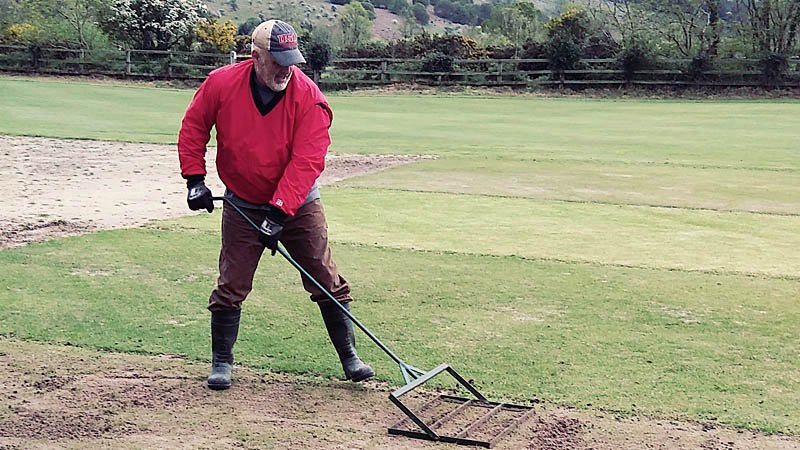
David Payne is not your traditional college student studying turfgrass management.
A student at Ohio State ATI, Payne is one of a couple of college students blogging this summer from Europe where he is serving a brief internship while working toward an associate's degree in turf studies.
He also happens to be 59 years old, on his second marriage and is busy trying to reinvent himself.
In hindsight, in today's economy that has forced many past age 50 to reinvent themselves, that all probably makes him more typical than one might think.
A Texas native, Payne earned a bachelor's degree from Texas Tech and a master's from Emporia State and was a teacher and coach for more than 20 years in Texas and Kansas. He moved to Wooster in 2016 when his wife, Kris Boone, Ph.D., was named ATI's director.
Since then, he's had a hard time finding work as a teacher and coach and figured there was no better time to take that next step in redefining himself and his career path.
"I have always been interested in turf," he said.
"Moving to Ohio gave me the opportunity to go to ATI and learn turfgrass management from one of the best programs in the nation."
He's not just saying that because his wife is the boss there.
Through the connections of ATI assistant professor Ed Nangle, Ph.D., Payne is spending the summer abroad interning for the Irish Sports Turf Institute and blogging about the experience for TurfNet. That experience, which continues until August, gives Payne the opportunity to work with machinery, equipment and people he never would encounter in the U.S., like a vintage Lamborghini tractor and his new best friends, the bartenders at the many local pubs.
I have always been interested in turf. . . . Moving to Ohio gave me the opportunity to go to ATI and learn turfgrass management from one of the best programs in the nation.
Although he is not the typical intern, Payne's age and experience have been a benefit in some ways.
"Study abroad programs require a certain level of flexibility and a willingness to pursue what is a difficult opportunity by opting to be away from family," Nangle said. "The systems are very different from country to country, customs and thought processes are also very different and so it requires a student who is very focused on going abroad to succeed. Further to that, international internships can be difficult to setup and having patience is a virtue as issues arise and changes have to be made, David showed that in spades."
When Payne decided on a new career path in turf management, naturally his concerns centered around age - not only as a student at ATI, but after he graduates, as well.
"My fears were the typical ones: being old and starting over, fitting in. Most of the students are golf oriented . . . probably my weakest area," he said. "The only concern I have would be being able to take my knowledge and work/teach down the road. I fear some would shy away from someone like me without giving me a chance."
His time interning in Ireland, where he has the chance to learn about different cultures, different processes for maintaining turf and different tools with which to do it can only help increase his marketability when he matriculates through ATI, Nangle said.
"For me, when I completed an international internship, it made me realize reality – an internship where you are handed clothes, schedule, bills paid is great but that's not life. Having to juggle the responsibility of managing money, bills, banking, healthcare in another country is a scary, but character-building opportunity," Nangle said. "It is not for everyone, but it does provide a resume a very unique finish compared to a vast majority of people competing for jobs, and there are many people who will say that without the experience they would not have ended up where they are today. David's experience is more unique than most – getting research exposure at ISTI in this way is certainly beneficial for him, but he can now truly compare what different disease pressure look like in the midwestern United States and an island in the Atlantic Ocean that has constant air movement and low relative humidity levels."

